Software projects
The projects listed here are a curious mix of different software projects I am
(or was) involved with. The reason for doing this is mostly the pleasure of
hacking in the original
sense of the word.
So. Some of the projects here (like Bond or
Gofai are also research projects where the programming aspect is incidental.
Programs like the Kraken were written because
they looked simple to do and I needed them. Others, like the contributions to the
KDE projects are done just for the fun of it.
There are also a number of older efforts,
which are probably not relevant at this moment as applications.
Xapagy
 Xapagy is a cognitive architecture which has been designed to perform narrative reasoning, an activity roughly analogous to some of the mental processes humans perform with respect to stories.
Xapagy is a cognitive architecture which has been designed to perform narrative reasoning, an activity roughly analogous to some of the mental processes humans perform with respect to stories.
Click here to go to the main page of Xapagy.
YAES
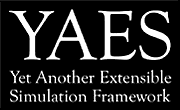 YAES (pronounced as "yes") is Yet Another Extensible Simulator.
More closely it is a Java library which offers a number of
abstractions which allows its users to quickly and easily assemble
simulators for a large number of problems.
YAES (pronounced as "yes") is Yet Another Extensible Simulator.
More closely it is a Java library which offers a number of
abstractions which allows its users to quickly and easily assemble
simulators for a large number of problems.
Click here to go to the main page of Yaes.
Kraken
 Kraken is an application for managing various documents and webpages.
It also allows users to annotate these entities with metadata
such as notes, opinions, BibTeX bibliographic info or calendaring info.
The resulting database can be queried and the results are presented in
a HTML format with links to the originating information.
The format of kraken annotations is RDF with an associated OWL ontology.
The annotation files can be readily parsed by third party applications. Thus
the kraken can be used as a data collection method
Click on the icon to go to the Kraken webpage.
Kraken is an application for managing various documents and webpages.
It also allows users to annotate these entities with metadata
such as notes, opinions, BibTeX bibliographic info or calendaring info.
The resulting database can be queried and the results are presented in
a HTML format with links to the originating information.
The format of kraken annotations is RDF with an associated OWL ontology.
The annotation files can be readily parsed by third party applications. Thus
the kraken can be used as a data collection method
Click on the icon to go to the Kraken webpage.
Kontributions to the KDE project
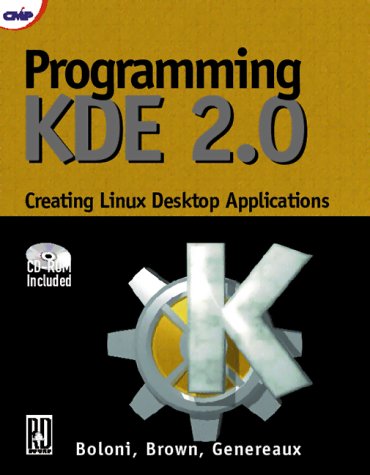
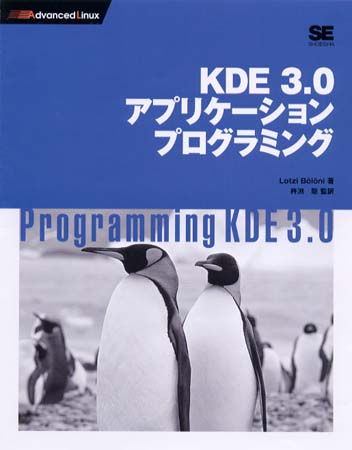 The KDE programming book I wrote and the updated Japanese edition.
The KDE programming book I wrote and the updated Japanese edition.
The BOND agent framework
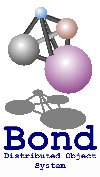 Version 2.0 of the Bond was a general purpose, Java based, distributed object
system and agent framework, which I wrote while working on my PhD thesis at the
Computer Sciences Dept of Purdue University.
This system (written between 1997-2000) is now mostly of historic importance. Many of the components of the system were dealing with issues such as messaging between remote objects, directory lookup, persistency and message parsing and interpretation. In the years since then, these topics were handled at the level of industry standards, and many high quality solutions were developed, some of them open source.
The distinctive qualities of the Bond 2.0 system (the multiplane state machine based agent model, mutability, reflection etc) are inherited by the Bond 3.0 version.
Version 3.0 is a complete rewrite of the Bond agent system, relying on current best of breed Java technologies. Please go to the webpage.
Version 2.0 of the Bond was a general purpose, Java based, distributed object
system and agent framework, which I wrote while working on my PhD thesis at the
Computer Sciences Dept of Purdue University.
This system (written between 1997-2000) is now mostly of historic importance. Many of the components of the system were dealing with issues such as messaging between remote objects, directory lookup, persistency and message parsing and interpretation. In the years since then, these topics were handled at the level of industry standards, and many high quality solutions were developed, some of them open source.
The distinctive qualities of the Bond 2.0 system (the multiplane state machine based agent model, mutability, reflection etc) are inherited by the Bond 3.0 version.
Version 3.0 is a complete rewrite of the Bond agent system, relying on current best of breed Java technologies. Please go to the webpage.
GOFAI-WMT
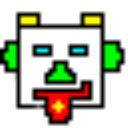 aka
Good
Old
Fashioned
Artificial
Intelligence
With a
Modern
Twist
is a program which allows you to easily enter free format information and
organize it into a semantic network. You can use it as a
"beefed up" bookmark repository (it integrates with netscape),
an ad-hoc tool for brainstorming or just a jotter with a nifty
interface. Network collaboration facilities and reasoning
plugins will be added after version 1.0.
aka
Good
Old
Fashioned
Artificial
Intelligence
With a
Modern
Twist
is a program which allows you to easily enter free format information and
organize it into a semantic network. You can use it as a
"beefed up" bookmark repository (it integrates with netscape),
an ad-hoc tool for brainstorming or just a jotter with a nifty
interface. Network collaboration facilities and reasoning
plugins will be added after version 1.0.